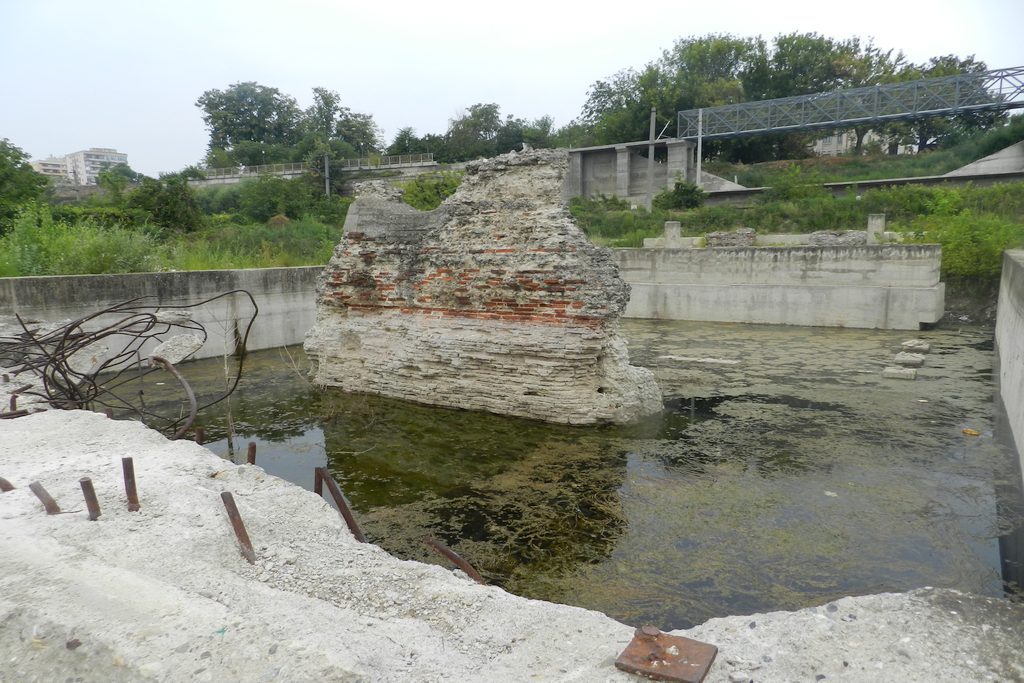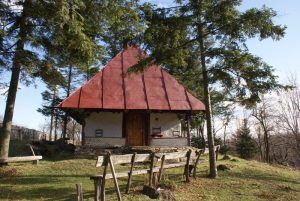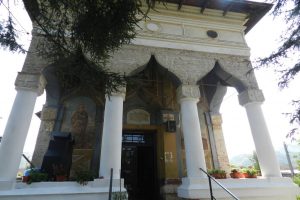

The location to build the Traian bridge was chosen by Apolodor of Damascus downhill from today’s Severin, because the Danube waters were calmer after exiting the Cazanelor defile (Porțile de Fier) and the bottom of the river was loaded enough with rocks and stones carried from the pass between the Carpathians and Balcans, an extremely stable foundation to support the construction. The bridge was 1135 m long, linking the Pontes camp on the southern bank (today’s Serbia) to the Drobeta camp, on the northern bank. The latter had become Roman territory after the first Dacian war (101-102 a.C). According to Dio Cassius’ writing (LXVIII, 13,1), the bridge was aproximately 18 m high and 12m width, to allow passing, like on land of a marching cavalier legion. At the bridge’s ends, southern (Pontes) and northern (Drobeta) there were triumph arches and monumental gates were built, expression of the Roman empire greatness and strenght.
Dio Cassius consideres that emperor Hadrianus (117-138) is responsible for the partial distruction of the bridge to protect the south of the Danube from the invasion of roxolane and iazyge tribes. The abandonment and total distruction of the bridge have to do with the permanent abandonment of Dacia (275 a.C). During the Renaissance, when the interest for the Ancient times genious works were a passion in the West, king Francisc I of France asked sultan Soliman Magnificul (who will destroy the Severin fortress) to allow him the demolition of a pillar of the bridge to find out the secret of the cement composition used.
The bridge ruins were thoroughly studied during modern times in 1689 by genious Austrian officer Luigi Ferdinando, Count of Marsigli, who, keeping in mind the expansion of the Hapsburg empire, wanted (with no success) to build another bridge along the remains of the Traian bridge.
The Drobeta camp is the first urban center as military, economic and religious importance from the Olteniei and Banatului region and the third urban center in Dacia, after Sarmizegetusa and Apullum. In 126 a.C, under emperor Hadrian’s ruling (117-138 a.C), the Drobeta camp (14000 inhabitants is raised to town level Municipium Publium Aelium Hadrianum Drobetense) and later under emperor Septimius Severus (193-211 a.C), in 193 a.C it is raised to colony status. At the middle of the 3rd century, the Drobeta colony was spread across 60 ha and had an aproximately 40000 inhabitants population. The Roman emperors, even during Dacia’s abandoment, continued to redo and maintain some important fortresses north of the Danube, like Drobeta.




